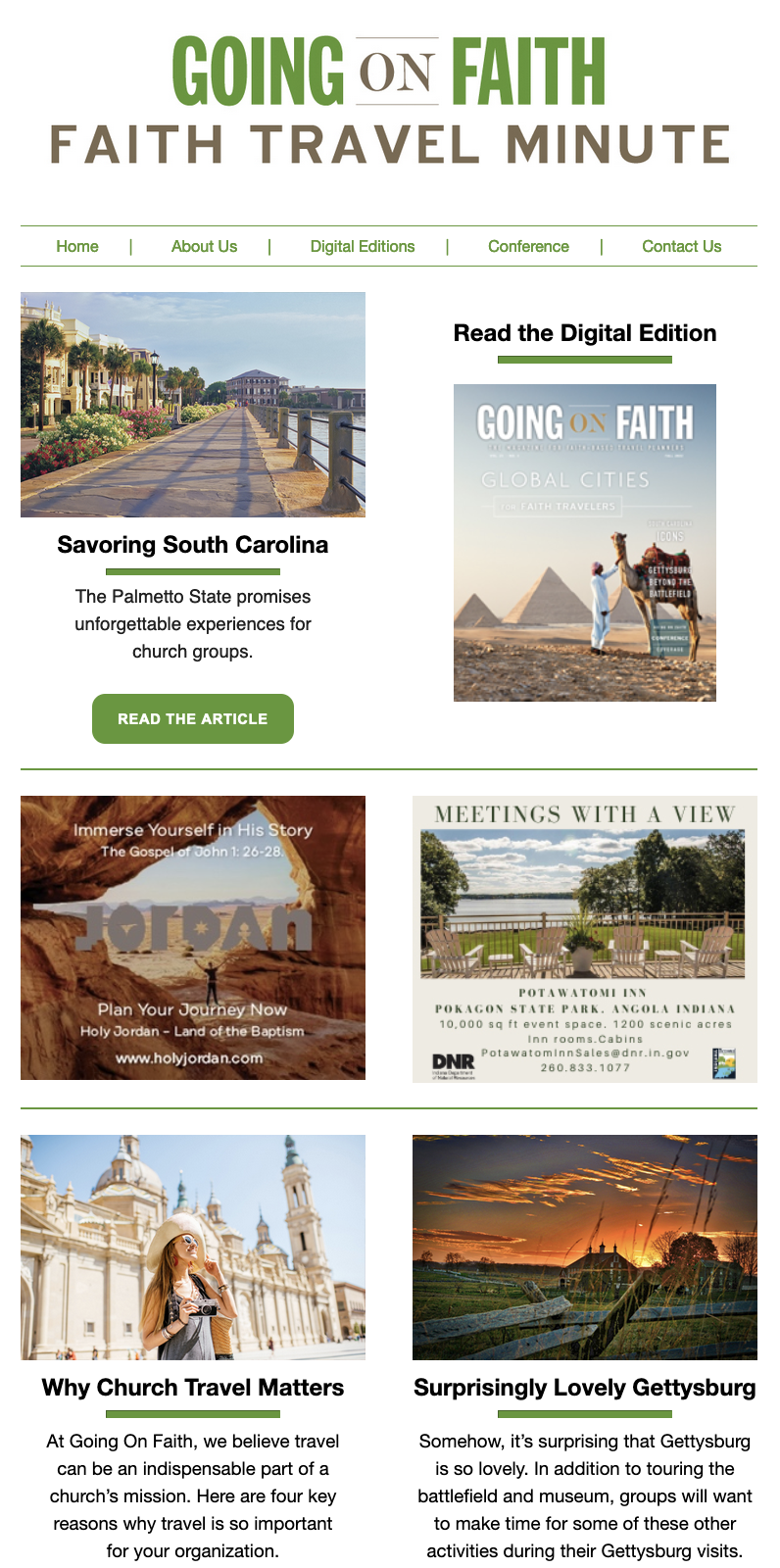No matter where your travels take you in the Northeast and mid-Atlantic states, you aren’t far from some of America’s most iconic attractions. From lighthouses and national monuments to baseball stadiums and locations synonymous with U.S. liberty and freedom, the following are among the most respected.
Portland Head Light and Fort Williams Park
Cape Elizabeth, Maine
The oldest lighthouse in Maine is also one of its most photographed. The Portland Head Light was first lit in 1791 and was the first lighthouse approved after an act of Congress put all of the country’s lighthouses under federal control. The act was signed into law by President George Washington.
The Portland Head Light is on the iconic rocky coastline of Maine. It is owned and managed by the town of Cape Elizabeth and sits along the shores of Fort Williams Park.
“The lighthouse was built because this was one of the busiest ports on the East Coast at the time,” said Jeanne Gross, museum director at the Portland Head Light. “It was really important that ships get safely into harbors to deliver their goods and maintain the safety of the crew on board.”
The base of the tower is original, but the tower was raised and lowered several times between 1791 and 1891, she said. Originally, it was 72 feet tall from its base to its lantern deck and was lit with 16 whale oil lamps. The tower was raised 20 feet by 1865.
“It is still an active lighthouse. It has a directional beacon in the tower, like an airport searchlight,” Gross said. “It is on 24 hours a day, seven days a week. It is a white, rotating light.”
Groups love to visit, and though they can’t go up inside the lighthouse itself, they can visit the museum in the old keeper’s quarters. The museum contains a number of lighthouse lenses and interpretive displays.
The museum also presents information about the Portland Head Light and what was going on in history during its long life as a lighthouse.
Liberty Bell
Philadelphia
The Liberty Bell used to reside in Independence Hall, where the Declaration of Independence was signed. As park ranger Adam Duncan said, it is a bell not unlike many other bells. It wasn’t constructed to be the Liberty Bell. It just happened to be in the right building, at the right time and became an international symbol of freedom.
The bell was built in 1776. Its original purpose was to announce the opening of sessions of the Pennsylvania Assembly.
Between 1817 and 1846, a small hairline fracture developed at the lip of the bell and ran all the way up to the area that has Philadelphia stamped into it.
There are many stories about how the bell cracked. One story is that it cracked during John Marshall’s funeral but nobody noticed the crack because the bell was ringing just fine, said Duncan. Eventually, the crack spread, muffling the sound of the bell or causing a buzzing sound instead of “the crisp musical note it was intended to be,” Duncan said.
To restore the bell, the city of Philadelphia did stop-gap drilling, where the insides of the crack were filed down so they would not vibrate against each other and distort the bell’s tone. It was partially successful. The city wanted to ring the bell for Washington’s birthday in 1846. It sounded good at first, but by noon, the crack went through the word Liberty and up through the crown of the bell. The bell didn’t split in half, but it was irreparably damaged.
It was abolitionists, working to end slavery, who gave the Liberty Bell its name, basing it on the Bible verse inscribed on it: “Proclaim Liberty throughout all the land unto all the inhabitants thereof.”
Groups can view the Liberty Bell in the Liberty Bell Center, a beautiful museum across from Independence Hall. It is encased in glass, and visitors can view it and artifacts from the 18th century, watch a video, and walk through and read the history of the bell at their own pace.
Statue of Liberty
New York
Lady Liberty has stood in New York Harbor since the 1880s and is one of the most iconic American attractions. About 4.5 million people visit the monument each year, but only about 20% of them can access the statue itself, said Suzanne Mannion, director of public affairs for the Statue of Liberty-Ellis Island Foundation Inc.
Groups that want to tour Liberty Island and the inside of the statue must make their reservations well ahead of their visit because only a limited number of pedestal access passes are granted daily. If your group is unable to secure pedestal passes, don’t despair. The new 26,000-square-foot museum, which opened in 2019, gives all visitors the opportunity to experience it.
The museum celebrates the story of Lady Liberty and invites guests to “explore how the statue has evolved from a National Monument to a global icon,” Mannion said. That is accomplished through the use of artifacts, including the statue’s original torch, and a film that details why the French gifted the statue to the United States.
The Immersive Theater captivates visitors with a virtual fly-through of the statue, capturing the interior views and sounds of Lady Liberty. The museum gallery uses multimedia to show how the statue’s sculptor, Frédéric-Auguste Bartholdi, took it from a small plaster model to copper sheets pounded on negative molds to create Lady Liberty’s final form.
The $100 million museum project included island beautification and a secondary security screening facility. Guided tours of the island are not available, but all visitors can take a self-guided audio tour once they arrive.
Washington Monument
Washington
The Washington Monument was built to honor Washington for his military leadership during the Revolutionary War. The granite obelisk, one of the most famous monuments in Washington, was built between 1848 and 1884 and stands 555 feet tall. The pyramid-shaped capstone at the top takes up 55 of those 555 feet.
Initially, the monument was supposed to be hollow. Visitors would be able to walk inside and gaze all the way up to the top of the obelisk. But as it was being built, the organizers started taking donations from private supporters. In exchange, those supporters were given the opportunity to place an engraved stone in honor of Washington inside the structure.
“It became a bit competitive,” said Mark Ragan, a park ranger with the National Park Service. “They were supposed to be a certain dimension to take the place of a construction granite block. Some are six times that size. They got to be over the top. They accepted them, nonetheless. Some are like bas-relief sculptures, some are gold and silver, some have semi-precious stones, and some are very simple.”
Iron stairs were built all the way up to the base of the pyramidion so that visitors could see the amazing donation blocks on the inside of the structure, and the steam-powered lift used to place the blocks was kept as a way to transport people to the top. The structure is so popular that the number of visitors has far outstripped the capacity of its elevator. The monument was closed for renovation August 17, 2016, and is expected to reopen in August 2019 with a new and improved elevator and security facility.
Tickets to the monument are free but limited. Only about 1,800 tickets are given out daily. Groups should reserve tickets well in advance. Fifteen people at a time can take the elevator up to the top. They can catch the views of the District of Columbia through two windows in the granite and then walk down a flight of stairs to a small museum that tells the story of George Washington and how the monument came to be. They then catch the elevator back down.
Fenway Park
Boston
Many people don’t realize that Fenway Park, which was built as a baseball stadium in 1912, also played host to three professional football teams: the Boston Redskins, the Boston Yanks and the Boston Patriots. It wasn’t until 1968 that Fenway became the exclusive home of Boston’s legendary baseball team the Boston Red Sox.
The stadium holds 38,805 fans. Groups of 12 or more can either schedule a private tour of Fenway Park or go on one of the 60-minute public tours that are offered daily. Most visitors want to see Pesky’s Pole, the right-field foul pole, so named for Johnny Pesky, a Red Sox player who was never a power hitter but hit a home run that ricocheted off the pole and the Green Monster, the 37-foot-high green wall in left field.
Groups also get the chance to see the Fenway Park Living Museum collection, which has more than 170,000 artifacts related to Fenway Park and the Boston Red Sox, among them items from Red Sox legends Ted Williams, Babe Ruth and Carl Yastrzemski. There are displays along the Fenway Park concourses and in the Nation’s Archives at the Royal Rooters Club.
The Boston Red Sox won nine World Series championships and played in 13 since the baseball franchise was founded in 1901. Their most recent win was in 2018.










